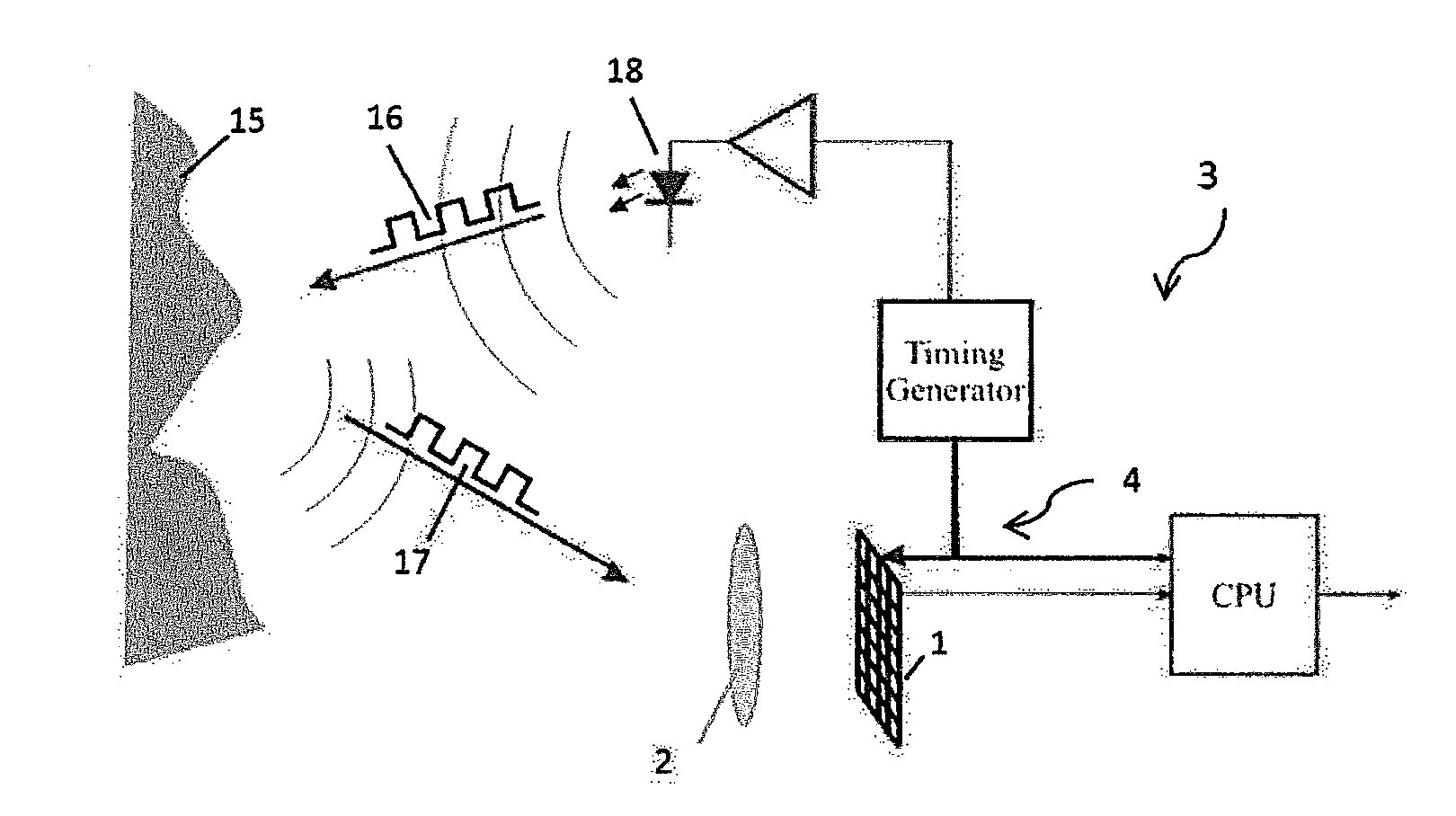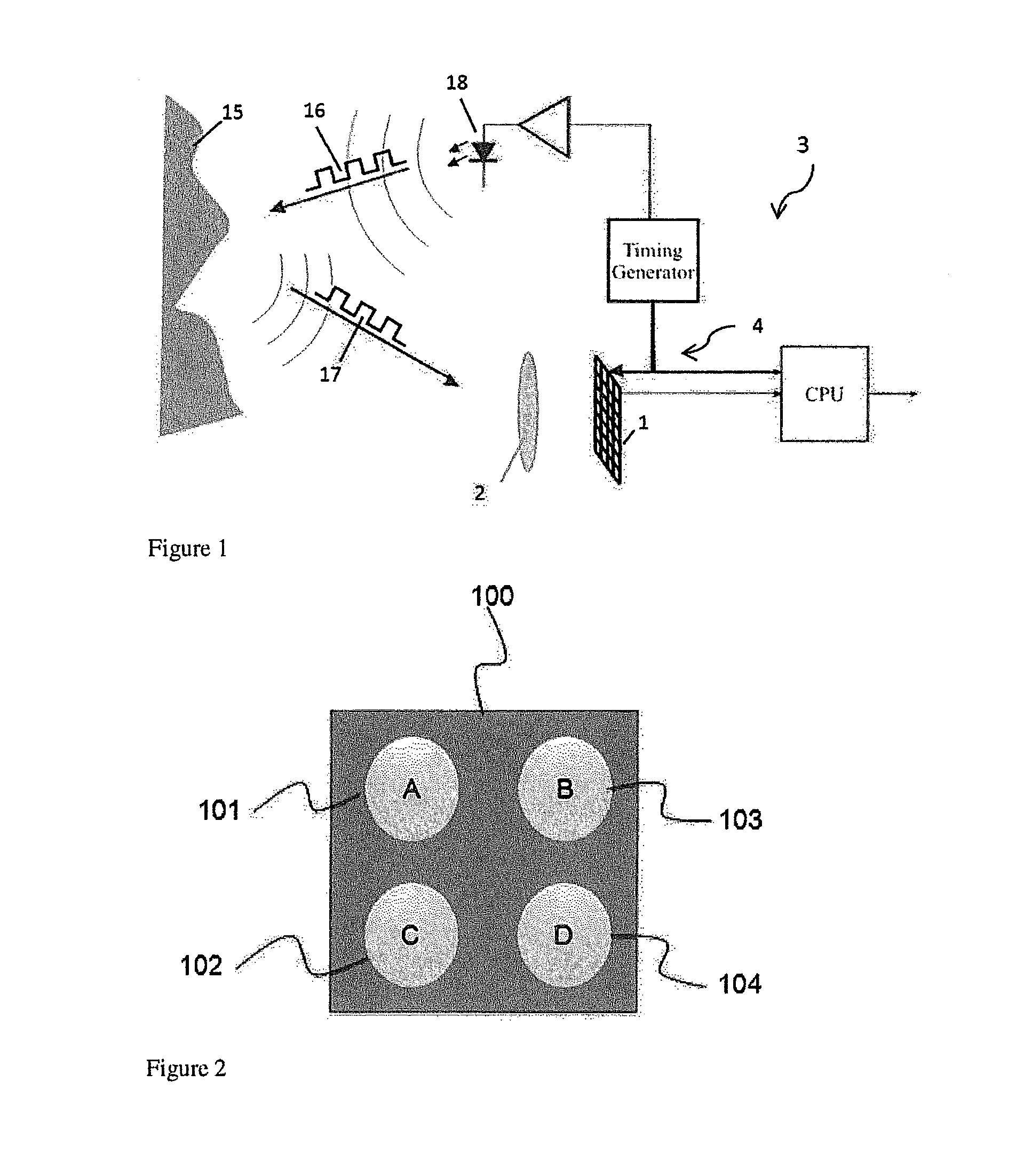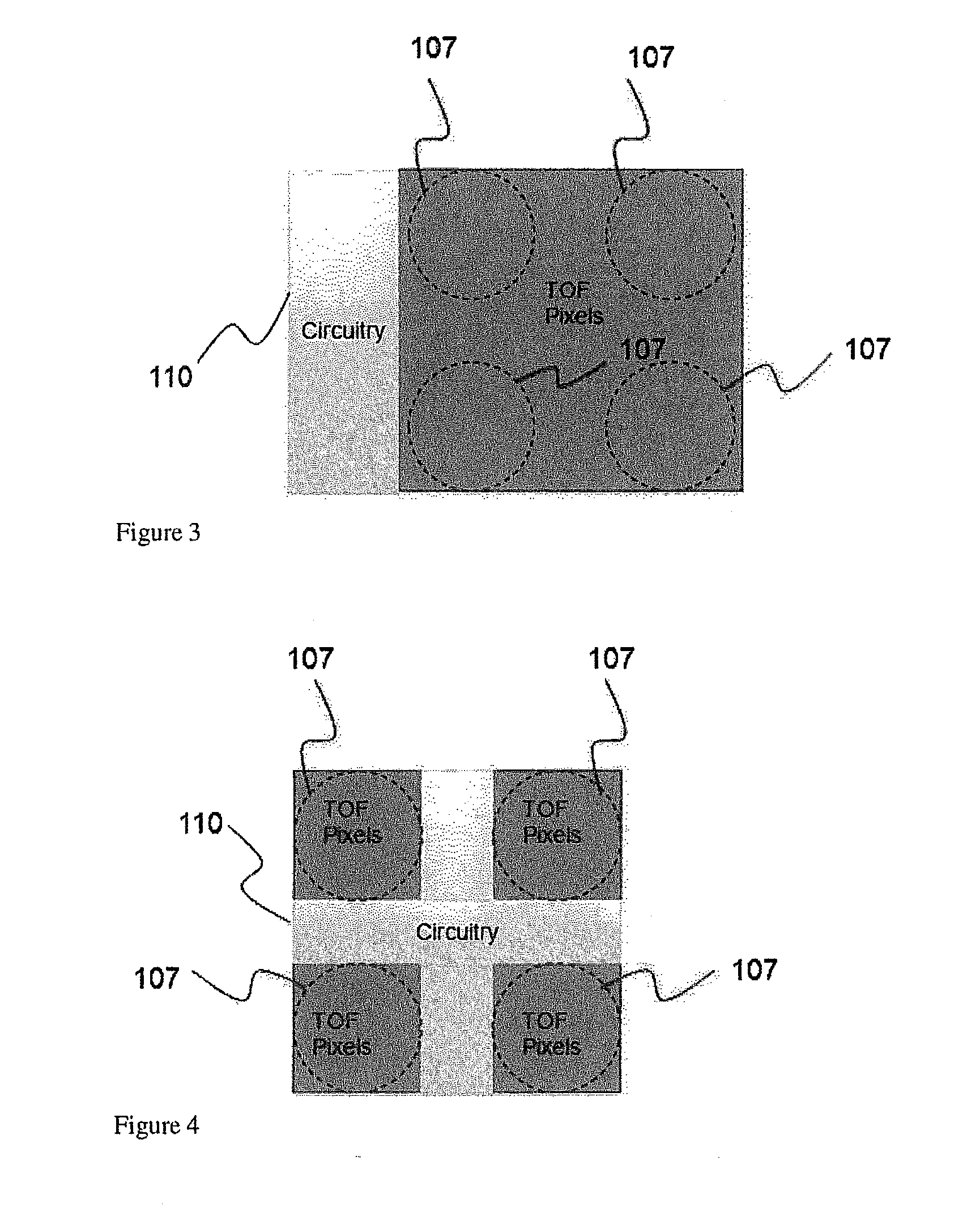Time-of-flight camera system
a camera system and time-of-flight technology, applied in the field of time-of-flight camera systems, can solve the problems of difficult to obtain depth information, complex methods and systems, and the inability to achieve depth information, so as to reduce the thickness and the size of the tof camera system, and improve the quality of the resulting imag
- Summary
- Abstract
- Description
- Claims
- Application Information
AI Technical Summary
Benefits of technology
Problems solved by technology
Method used
Image
Examples
Embodiment Construction
[0028]The present invention will be described with respect to particular embodiments and with reference to certain drawings but the invention is not limited thereto. The drawings are only schematic and are non-limiting. In the drawings, the size of some of the elements may be exaggerated and not drawn on scale for illustrative purposes.
[0029]As illustrated by FIG. 1, a conventional TOF camera system comprises one TOF sensor 1 and its associated optical means 2 (e.g. a lens), an illumination unit 18 for illuminating the scene 15 with respect to the TOF principle specifications, and an electronic circuitry 4 for at least driving the illumination unit and the TOF sensor. The light is usually in the infra-red wavelength domain and comprises periodically modulated pulses 16 emitted toward the scene. The TOF sensor and its associated optical means are designed to enable the capture of the emitted modulated light that is reflected back from the scene. One option for determining distance in...
PUM
 Login to View More
Login to View More Abstract
Description
Claims
Application Information
 Login to View More
Login to View More - R&D
- Intellectual Property
- Life Sciences
- Materials
- Tech Scout
- Unparalleled Data Quality
- Higher Quality Content
- 60% Fewer Hallucinations
Browse by: Latest US Patents, China's latest patents, Technical Efficacy Thesaurus, Application Domain, Technology Topic, Popular Technical Reports.
© 2025 PatSnap. All rights reserved.Legal|Privacy policy|Modern Slavery Act Transparency Statement|Sitemap|About US| Contact US: help@patsnap.com



